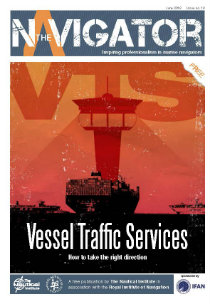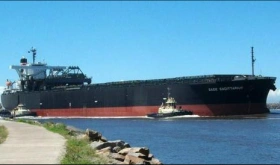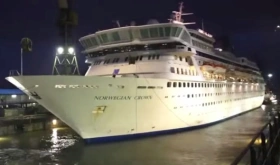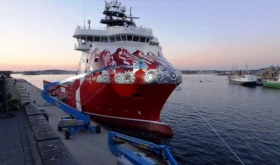As we look at, and try to understand, all the future fuel options, there is one particular fuel that has caught my attention. It is sulphur free, has low emissions, perhaps three to four times cheaper than marine distillate fuel, probably lower in price than LNG, a more beneficial fuel factor for the EEDI than LNG or diesel, it is non cryogenic and is already in widespread production (~50 million tonnes per annum) for a multitude of uses, including combustion. It has great potential for a much higher production and a distribution infrastructure more easily established than LNG.
Easily produced and relatively easy to transport, it has the benefit of being able to be made from the widely available natural gas or biogas, even from other feedstocks such as wood and waste (second generation renewables), but it has not been seriously considered for use as a marine fuel oil.
So what is it?
Methanol – A pure alcohol, a chemical used mainly for the production of other chemicals or used as a blend component in gasoline. As a product in itself it is not attractive to the diesel market in that it has a very low cetane number of 35 for heavy duty marine diesels, it has very low viscosity, poor lubricity, and has corrosive and solvency characteristics. Its calorific value is about half that of marine distillates, perhaps leading to reduced operational range but still viable for ECA operations. Perhaps these are the reasons why it has been left out of the initial flurry for alternative marine solutions to meet the low sulphur/cleaner emission fuel drive? If so, this might be a mistake.
Methanol can be converted to Dimethylether (DME) by processing through an onboard catalytic converter into a gas. This would be suitable for use in dual fuel type engines, which themselves are well on the way to being established as an optional marine power source with emission reduction benefits.
When considering a fuel, other than the established petroleum derived residual and distillate grades, there are a number of stages that need to be addressed specific to marine fuel system design. These are: bunkering, storage, handling/preparation, combustion and naturally the composition of the exhaust emissions. The most sought after alternative fuels are those that can ‘drop-in’ to current marine diesel system arrangements with no, or at the most minimal, modifications. The only alternative fuels close to meeting that requirement are advanced bio-fuels, but these are expensive to produce and still very much in their infancy with regards to global application and sufficient availability. Methanol is certainly not a ‘drop-in’ product, but it could be argued as being a more promising alternative than LNG; being a liquid under ambient conditions and likely to be cheaper to manage using existing infrastructure without all the cryogenic requirements, financial and energy costs of LNG.
The process for using Methanol is not a matter of loading into current petroleum derived diesel bunker tanks. It has a flash point of 12°C and a number of handling issues as already noted furthermore the resulting DME, following conversion, is a flammable gas so different statutory and classification rules would need to be applied. Retrofitting to a methanol/DME fuel supply is potentially feasible; however considerations have to be given to the not insignificant impact on existing ship fuel system arrangements whereas for a new build these issues, including the location of the converter and its safe containment can be handled from the outset.
Methanol/DME is fast emerging as a land based transportation fuel around the world, in Scandinavia, China and Korea to name but a few amongst those who recognise its win-win low cost production possibilities coupled with low emission characteristics. The EU will certainly recognise its potential and we can expect a rapid growth in supply and demand over the next 10-20 years making it a very viable contender to LNG as an alternative marine fuel oil.
So, is it back to the drawing board for alternative fuels in ships and time have a serious think about the possibilities that methanol direct and methanol to DME might have?
Ultimately if the price is right and the assessment of risks can be managed, then we could be seeing yet another fuel option vying for its place to churn the wake.
But having said all this, what about Ethanol?
The article was initially published in Lloyd’s Register Blog. Lloyd’s Register provides professional services across the life cycle of assets that are of critical importance. Set up in 1760 to survey merchant ships, and ‘classify’ them according to their condition, in the 1900s Lloyd’s Register began to apply expertise to other sectors. Lloyd’s Register now offers services to the marine, energy and rail industries, and management systems services across a wide range of sectors, focused on improving safety, quality and performance.
ABOUT THE AUTHOR
 |
Timothy Wilson is FOBAS Services Product Manager at Lloyd’s Register EMEA. |














Leave a Comment